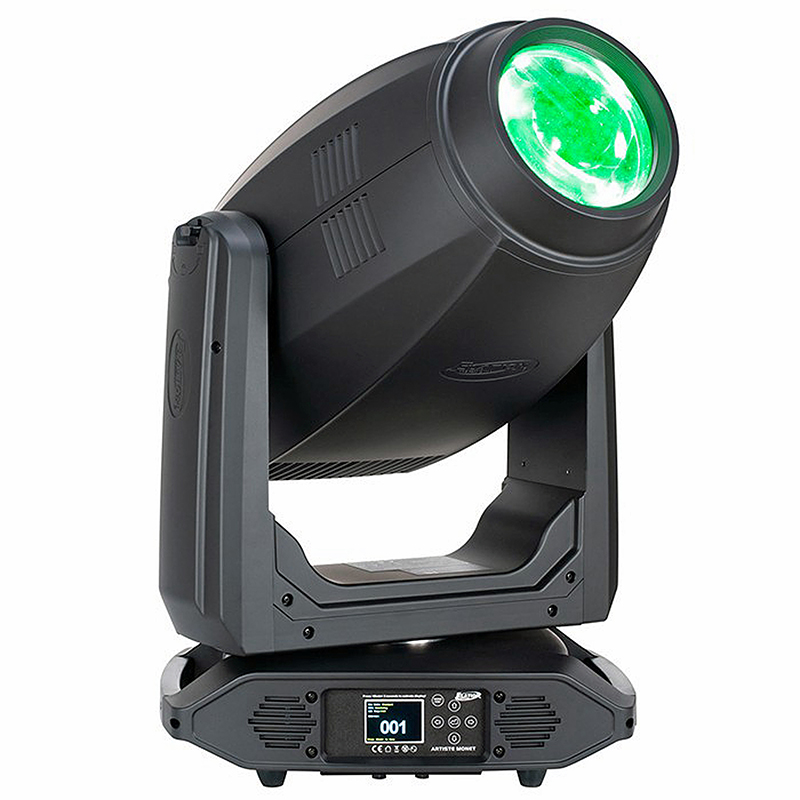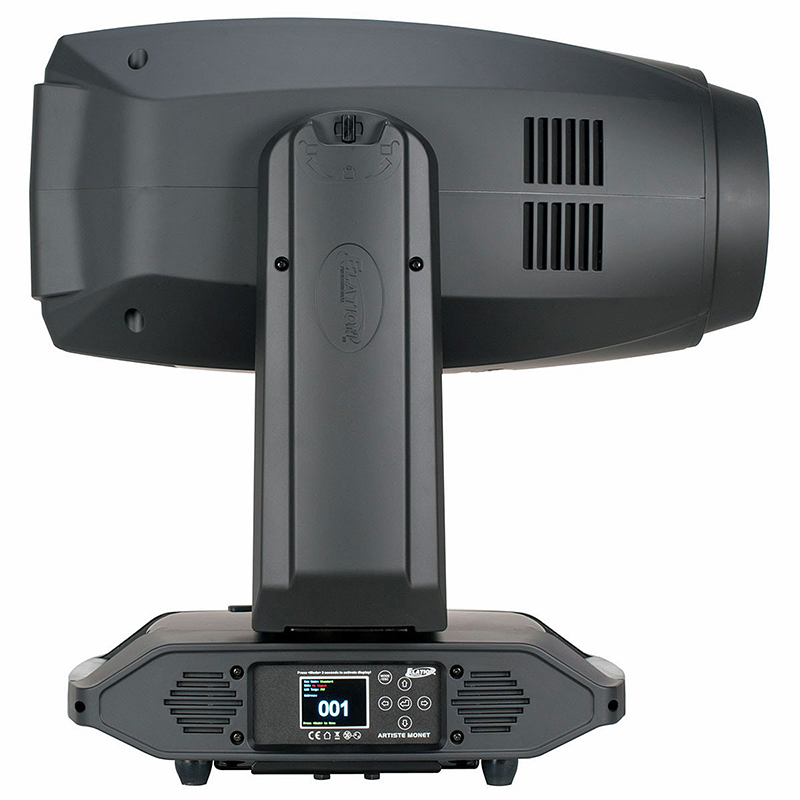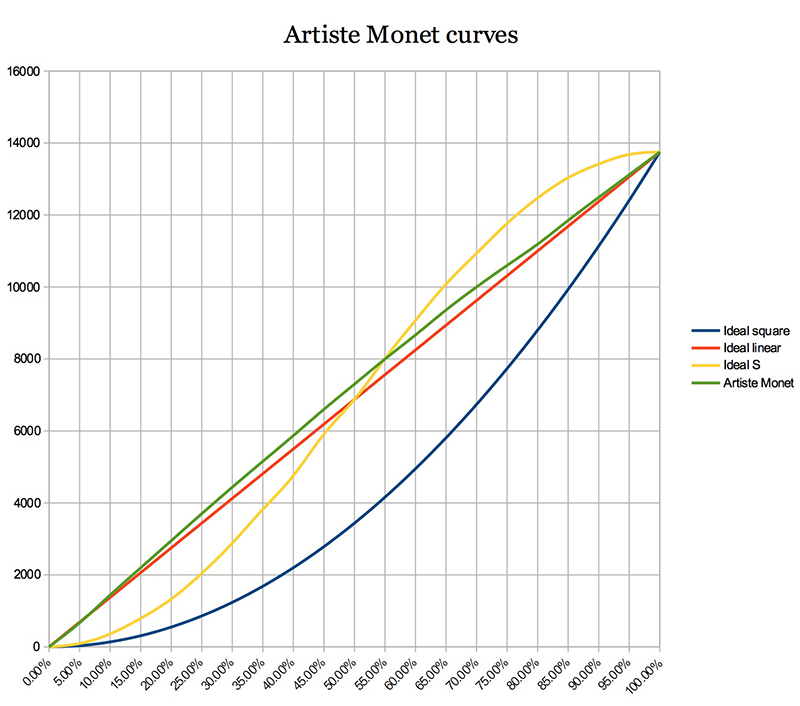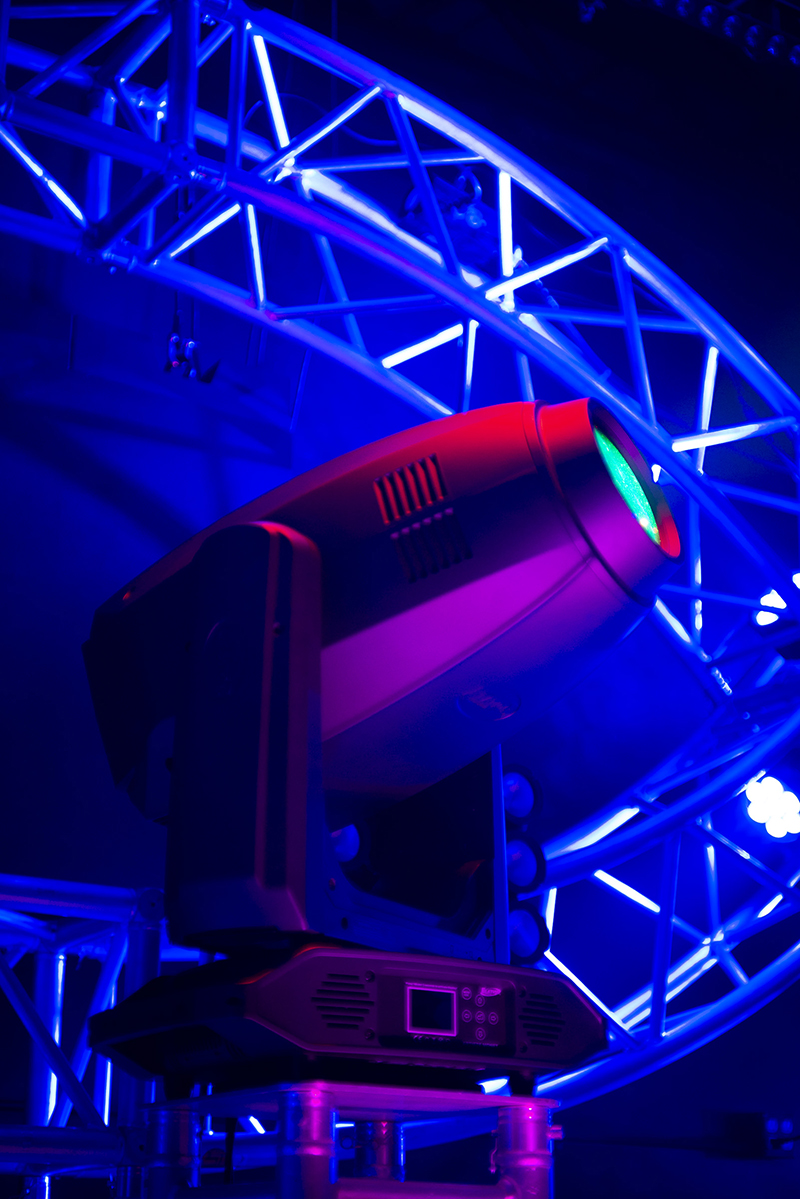
Nowhere do we observe a stronger demonstration of the principle of trade-offs in intelligent lighting than in color mixing systems. Color is one of the most salient aspects of light we can control, and perhaps it’s most tricky to perfect. The ideal color system would combine perfect spectral reproduction at any wavelength(s) we wished, be instantly responsive, and introduce negligible output losses. The compact, affordable, infinitely-tunable-wavelength laser array being a Wholly Imaginary Thing, we must use our currently available subtractive and additive methods.
These have worked well enough that for the last several years, innovation has largely been centered around the specific form factor of the mixing system itself, subtle adjustments to hues and saturation, and so forth. We’ve so far been bereft of re-imaginings of the three-color subtractive mix setup that we’ve all grown accustomed to, but today, we look at a light far from ordinary — the Elation Artiste Monet, with a unique seven color flag system.
The Artiste Monet uses a 950 watt custom-designed LED array with a native color temperature of 7,000 Kelvin. I measured an output of 14,300 lux at five meters at 50 percent zoom after letting the fixture warm up, and a CCT of 6,560 Kelvin by the time that had passed through all the internal glass. Dimming quality was excellent, following a default linear curve with no noticeable artifacts anywhere in the range. When using the dimmer channel on the fixture, there is a tiny but noticeable fade time when snapping to zero, just like a real mechanical dimmer. This fade is not present when the shutter channel is used. Elation tells me the LED module is technician-replaceable, and that this takes about ten minutes. The projected field is very flat and even, as expected from an LED fixture. The shutter channel includes a variety of expected strobe modes, including synchronous, random, and pulsed strobes.

SpectraColor System
Elation’s SpectraColor system is the real star of this fixture, with six primary color flags plus CTO: cyan, magenta, yellow, red, green, and blue. The user controls these “extra” three flags independently, so some care will need to be taken when generating palettes and presets. Colors are generally rich and vibrant, especially from the additional three RGB flags, while mixing from the CMY system was generally as expected. The Monet has a somewhat unsaturated cyan flag, which results in a blue range that doesn’t get as deep into true Congo blues as I would prefer — Elation says this is to keep the color in line with other fixtures in the range. The red, green, and blue flags offer rich, deep hues with output that one usually only finds in fixed color wheels, but that can be mixed like any other color. Color was reasonably even across the beam, depending on where in the optical train the zoom and focus elements were sitting. CCT is continuously variable down to 2,740 Kelvin with the CTO filter. This system is also fast, with changes taking place almost instantaneously. Great results can be had by adding some cyan, magenta, or yellow, and adding a bit of one of the RGB flags to adjust the hue, or warming the hues with the CTO flag. This is an interesting and unique color system.
The Monet also has a fixed color wheel to help fill in some of the gaps left by the color mix system, with a deeper red, a UV, amber, and a “High CRI” filter that essentially acts as a light minus green to even out the spectrum of light. There are six color positions plus open on the wheel, which also indexes and rotates, and is capable of split colors.
Gobos, along with the color system and animation, are all housed on a single removable module for service and maintenance. Gobos come on two wheels — a rotating and indexing wheel with seven patterns plus open, and a static wheel with another seven patterns plus open. Both wheels have shake and continuous rotation modes as well. I like the chosen gobos; several manufacturers have in the last several months released fixtures with new and unique gobos in them, and I’m glad to see this trend continue. Patterns on the rotating wheel tend toward use as aerial patterns, while the static wheel has patterns that could be used either in an aerial or a projection / animation role, depending on how one used them. All the gobos are glass, and user-replaceable using the familiar carriage system. There is an animation wheel on this module as well, with a pattern of wavy lines that does well in creating organic-looking effects. Gobo focus was good, with very acceptable levels of center-to-edge difference in the focus.
Further up in the optical train is the framing shutter system, which functions mostly as expected, but here the fixture has another unique trip to display. Where most fixtures with framing shutter systems can rotate a total of about ±45º degrees, the Monet’s framing shutter module can rotate 360º continuously, as well as index. This allows the shutter system to become another dynamic effect. Each framing blade can completely black out the entire field of light, and movement is very fast and snappy. There’s a macro channel too, for building dynamic effects with the shutter system quickly, a nice inclusion. An iris with continuous open / close and various pulse effects is here, as well.
The Monet has two frosts, a lighter frost which leaves some of the gobo intact, and a heavier “wash” style frost that spreads and diffuses the light, as well as two prisms: a four-facet circular and a four-facet linear, which cannot be overlaid. Both prisms rotate and index, while providing good image separation. Finally, the moving lens system provides an impressive zoom range, from 6.8º to 55º, an outstanding zoom range, which adjusts smoothly in under a second. The fixture includes a 16-bit auto-focus channel, which works well and allows the user very fine adjustments to the focus. Pan has a user-selectable range of either 540º or 630º, and the tilt range is 270º. I tested pan in the default 540º mode, and pan and tilt times were between 3.8 seconds and 3.26 seconds, respectively, which I found a touch on the slow side. However, movements were very smooth even at the slowest speeds, with no visible judder. Pan and tilt locks are included for transport.
Power input is via a Neutrik PowerCON TRUE1 in, and auto-ranges input voltage from 100-240V AC. DMX is accepted through five-pin XLR ins and pass-throughs, and networking data (Art-Net and sACN) through EtherCON RJ45 ins and pass-throughs. The Artiste Monet stands 80 cm (31.5 inches) tall with a base 45.7 cm (18 inches) by 33 cm (13.1 inches) and weighs 42.6 kg (94lbs). Rigging is via the familiar Omega-style brackets fitted with your choice of rigging hardware. System personality and settings are done via a full-color menu system on the base of the fixture. Resetting the fixture in a look was very well-behaved, with the fixture slowly fading to black, resetting, then moving back into position and fading back up — a feature I wish every manufacturer would include on every moving light they make. Elation also includes a “Silent” mode on their newer software for applications in sound-sensitive environments.

At A Glance
An Artiste with a Unique Palette
The Monet showcases Elation’s evolution of the Artiste range with features never before seen on an intelligent fixture. The seven-flag mixing system is unique and powerful, and though it takes effort to reveal its secrets, the results are rewarding. With theatrical-grade dimming and color, the Monet is well-suited for theater spaces and touring productions of all varieties.
Elation Artiste Monet
PROS: Bright, great gobo selection, good overall color
CONS: No mixed Congo blue
FEATURES
- CMYRGBC Color System
- Color Wheel Included
- Dual Prism System
- Dual Frosts
- Rotation and Static Gobos
- Full Blackout Framing System
STATS Lamp Source: 950W 6,500K LED engine
- Max Wattage: 1300W
- Size: 31.5” x 18” x 13.1”
- Weight: 94 lbs.
- Zoom: 6.8°-55°
- MSRP: $14,000
Manufacturer: Elation Professional
More Info: www.elationlighting.com



